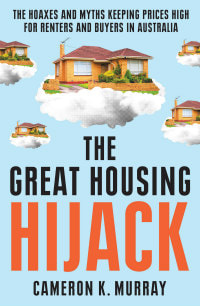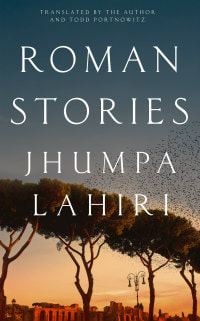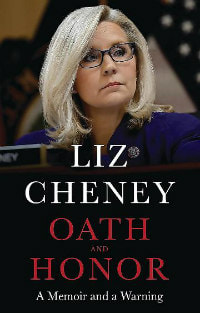 An academic explains how the housing market really works, and why government intervention is needed. Cameron K. Murray is an economist and expert on housing markets. At various stages in his life he has been a renter, a home owner and landlord, and so comes at the problem of housing affordability not only from an academic perspective, but also lived experience. There is much received wisdom that Murray turns on its head in The Great Housing Hijack. For example, we learn that rents have stayed steady at 20 percent of income for the last several decades, and that historically they track at roughly that percentage. Or the fact that developers stagger the release of housing to capitalise on the best price. This is all part of what Murray describes as the “five housing market equilibria”: asset prices, rents, location, density and the absorption rate (the aforementioned release of housing). These equilibria have interacted historically to give us a property market that doesn't veer too much off a predictable path. (Remarkably, archaeological records from Mesopotamian stone tablets show property price similarities to today). In short, the market left to its own devices produces big inequalities. High prices and the concentration of wealth are the result. We now have a market where landlords are competing with each other for properties, pricing out owner-occupiers. Murray writes: “Historically, housing markets were always divided between the haves and have-nots. What we are seeing since the 1980s is a return to the normal operation of the housing market after the post-World War II decades of heavy government intervention.” Nor does the future of the market look hopeful. While many commentators may call for an increase in supply to reduce prices, the reality is that the two thirds of the population who own or have mortgages do not want to see the value of their assets diminish. Even a 10 percent decrease in the values of Australian homes would be a disaster, wiping billions of dollars off the housing market. What is the solution? A simple one, as it turns out. The reader may be surprised to learn it was a Liberal prime minister, Robert Menzies, who in the post war period championed public, affordable housing. It was a time when soldiers were returning from war, creating the conditions that made it politically palatable to offer cheap housing. War heroes couldn't be treated shabbily. The Menzies policy of building houses at a rate of knots worked, increasing home ownership to a high of 70 percent. Murray suggests we treat affordable housing as we do roads, schools and hospitals, as a right for all citizens. He suggests we follow the Singapore model of building housing and selling it at essentially cost price. The system would work as a parallel market to the private one. A book of hard truths we need to face, with a solution that is well within reach should we grasp it. The Great Housing Hijack: The Hoaxes and Myths That Keep Prices High for Renters and Buyers in Australia, by Cameron K. Murray. Published by Allen & Unwin. $34.99 Review by Chris Saliba  A mistreated doll haunts an old house in this new reissue of the Susan Hill classic. In the English Fens, a marshy region in Eastern England, lies the hamlet of Iyot Lock. Two children, cousins Leonora and Edward, are visiting their Aunt Kestrel, who has a large, dilapidated house there. Edward is a timid child, sensitive and withdrawn, while his cousin Leonora is dark, brooding and possibly evil. She complains that she would like a beautiful doll, the type of which she describes to Edward, who in turn makes a painting of the imagined toy. She wants an Indian bride doll, with elaborate clothes and jewels and braiding in its hair. When Aunt Kestrel visits London, she buys Leonora a doll, thinking this will satisfy the child. But it turns out it's not the sort of doll she wants at all. Instead she receives a baby doll, made of china, with blue eyes and a rosebud mouth. In her fury Leonora throws the doll at the marble fireplace, violently cracking its head open. The broken doll spooks Edward. He hears it crying out in the night. Finally, after several days of the haunting cries, he decides to bury the doll in the church's graveyard, with chilling consequences. Every page of Susan Hill's Dolly drips with dread and menace. She brings to life the creepy English Fens with her pared back but evocative prose. A sense of suspense and looming horror keep the reader fully immersed in the story. The characters are believable and well-drawn. The foul tempered Leonora is truly frightening. Because the author creates such an authentic atmosphere, one that causes the heart to tremble, the supernatural aspects of the story also pay off. It feels like a nightmare from which the sleeper struggles to wake. Classic horror for fans of Angela Carter and Shirley Jackson. Dolly, by Susan Hill. Published by Vintage Arrow. $22.99 Review by Chris Saliba  A tragic accident is told in harrowing, intimate detail. In 2012, five-year-old Palestinian boy Milad Salama was scheduled to go on a school trip. His family lived in the impoverished town of Anata on the West Bank, where infrastructure such as roads and housing were of a poor quality. The bus traveled along the Jaba road - a road notorious for its safety issues. Conditions were bad on the day of travel, with an approaching storm making visibility difficult. An oncoming truck collided with the bus and seven children died. Help was late to arrive, which if it had come earlier could perhaps have saved lives. A Day in the Life of Abed Salama describes the events of that awful day. Through a brief biographical sketch of Abed Salama, Milad’s father, the reader also gets a short history of the Israeli-Palestinian conflict and how occupation directly affects the lives of Palestinians. The genius of Nathan Thrall’s book is how it shows personal lives caught up in larger historical forces. With its focus on people and their relationships to each other, the book reads very much like a novel. A humbling book that concentrates on the pain and suffering of many Palestinian lives. A Day in the Life of Abed Salama, by Nathan Thrall. Published by Allen Lane. $36.99 Review by Chris Saliba  Nine new stories from Jhumpa Lahiri Acclaimed British-American writer Jhumpa Lahiri moved to Italy some ten years ago, and now writes in Italian. Her new collection, Roman Stories, comprises nine stories, with Rome featuring as both place and state of mind. They are translated from the Italian by Lahiri and Todd Portnowitz. Anyone familiar with the author's writings will know she concentrates on the minutiae of daily life: the particular slant of light during a summer afternoon, the memories a favourite restaurant conjures, warm and inviting houses. Lahiri interweaves these descriptions with various narratives about middle-class life, relationships between husband and wife, parent and child, and the ups and downs of close friendships. A particular theme that recurs is the feeling of being an outsider, of locals suspicious, even hostile, to foreigners (Lahiri is the daughter of Indian immigrants). The stories have a ruminating, Proustian feel, of memory in search of lost time, of raking over old personal events and trying to glean meaning from them. Lahiri's fiction is deceptively simple and easy to read, yet her writing, while subtle, is psychologically rich. An intimate and highly enjoyable collection, for readers of Rachel Cusk and Deborah Levy. Roman Stories, by Jumpa Lahiri. Published by Picador. $34.99 Review by Chris Saliba  The decline and fall of the Republican Party, as told by one of its own Liz Cheney's memoir of her time in Congress is a surprisingly good read, a gripping minute-by-minute account of how the Republican Party fell to Donald Trump. It's a story of Republican colleagues Cheney had thought were good and decent, hypocritically supporting a man they in private loathed. Not only that, when it became obvious Trump was dangerous and a threat to American democracy, weak-kneed Republicans continued to trumpet his lies. As Cheney makes clear, Trump didn't do it on his own, he had a legion of enablers in the Republican Party. They should have known better. For non-American readers who've always marveled at how forthright American patriotism is, Cheney makes you understand why. She discusses the importance of the constitution and how America's freedoms were hard fought for. To be a patriot means putting democracy and the constitution above one's political party. An excellent insider's account from someone who has rubbed shoulders with a lot of the main players in the Republican Party, providing a stunning amount of detail, but also some fascinating thumbnail portraits. Oath and Honor: A Memoir and a Warning, by Liz Cheney. Published by Headline. Review by Chris Saliba  A posthumous collection of nine stories from Georgia Blain Australian writer Georgia Blain died in 2016 at the relatively young age of fifty-one. She already had a critically acclaimed body of work behind her, and surely there would have been more to come. We All Lived in Bondi Then is a collection of short stories that Blain wrote between 2012 and 2015, which she intended to publish after what was to become her final novel, Between a Wolf and a Dog. The nine stories that comprise the volume appear now for the first time. Blain sticks to close and intimate subjects – elderly and sick parents, the difficulties of romantic relationships, childhood traumas, complicated friendships. The stories are written in a simple and immediate prose, detailing emotions and states of mind with an elegant clarity. The main appeal of this collection is Blain's ability to map the human heart – our failures, fears, anxieties and occasional triumphs – creating a compelling work of great authenticity. A highly readable, absorbing collection that lingers in the memory. We All Lived in Bondi Then, by Georgia Blain. Published by Scribe. $29.99 Review by Chris Saliba |
AuthorNorth Melbourne Books Categories
All
Archives
March 2024
|
 RSS Feed
RSS Feed
